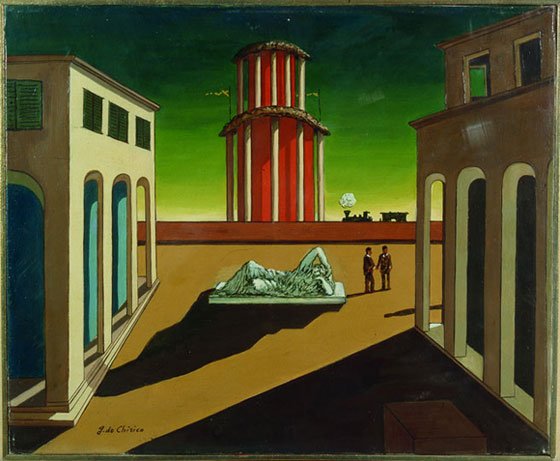 |
The fundamental period for this painter, undisputed master and creator of metaphysical painting, is his trip to Paris in 1911, where he gets to know the major artists of the time and is able to make his first representations of both mannequins and the desolate plazas of Italy.
Piazza d’Italia is from the artist's mature phase, in which the elements of metaphysical painting reach their full expressive power. The series of long arcades and buildings, which make reference to the architecture of Ferrara, Florence and Turin, and to the paintings of Giotto, are shown from uncertain and anxious perspectives and are immersed in an atmosphere that is supine, immobile, and devoid of vital signs. The long shadows and earthy colors evoke the idea of an impossible space in which life has abandoned matter. The solitude, which is broken only by two small human figures, a shadow that suggests a third person not visible, and a steam train crossing in the background, resumes almost presumptuously in the classic statue located in the center: the form is human, but at the same time it s immobile, marbled, and evergreen. |
